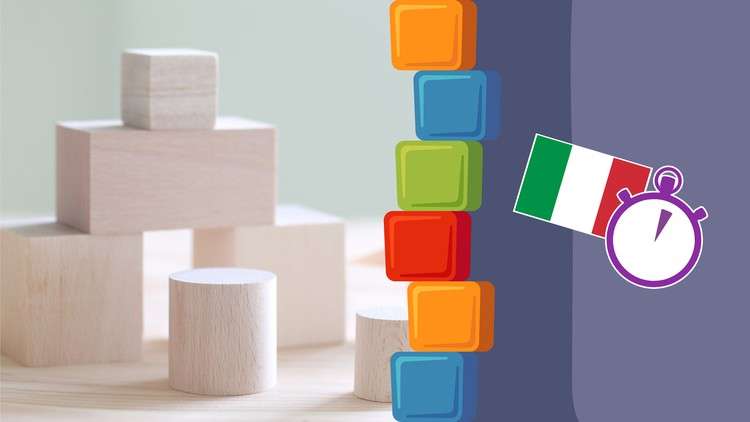
Learn about how the Italian language is put together by breaking it down into its different sentence structures
What you will learn
Learn about the seventh structure in the Italian language
Get to grips with how easy it is to manipulate this structure and say what you want with it
Get plenty of opportunity to practise using this structure
Learn how to form questions and statements in structure 7 in both the positive and negative
Complete lessons in 3 minute chunks – perfect for the busy learner
Build your own sentences without memorisation
Get more familiar with the conditional in Italian
Learn about how sometimes the English word “would” doesn’t necessarily mean it’s a conditional sentence
Speak from the very first lesson
Description
BUILDING STRUCTURES IN ITALIAN – STRUCTURE 7
Ciao e benvenuto 🙂
Welcome to the seventh Italian structure in the Building Structures series. In the sixth course, we looked at the conditional version of the infinitive carriers and used them when forming our questions and sentences. Well, in this course, we’re going to be looking more in depth at the conditional tense (aka the conditional mood).
What is Building Structures?
The entire Italian language can be broken down into several different structures. If you take any sentence from any Italian book or any utterance, you will see that it fits into one of these structures.
I developed the Building Structures series as a unique way of learning the various sentence structures that exist in the Italian language.
Every structure you learn gives you the ability to say a huge amount. Some structures are used more than others, but all the structures together make up the whole Italian language. Once you’ve learnt how a structure works, all you have to do is insert different words into the slots and you have a sentence.
This course introduces you to structure 7.
The seventh structure, as I said, is where we explore conjugating verbs into the conditional. The conditional is a tense we’ve looked at before, but only with infinitive carriers. However, when you conjugate other verbs into the conditional, you can use them to say what would happen.
In English, the conditional is as simple as putting the word would in front of the verb. In Italian, you have to change the ending of the verb instead. In this course, we’ll learn all about forming the conditional with regular verbs and irregular verbs (those that don’t follow the rules). We’ll look at how it fits into the seventh structure, how to turn it from a question to a non-question, and how to make this tense negative.
Just like when we looked at structure five, we’re going to look at ways we can use structure seven with other structures. By putting structures together, we open up a lot more of the language, and it allows us to express ourselves even better in Italian.
As always, all the lessons in this course have been broken down into three-minute chunks. That way, you can listen to one three-minute lesson every day without having to eat into your schedule. Obviously, you can watch more than one lesson per day, if you wish, but I would recommend you stop before you want to.
You’ll get lots of practise questions in this course to really get to grips with this structure. So, let’s start learning all about Structure 7 in Italian.
I hope you enjoy
Grazie 🙂
Kieran
Content